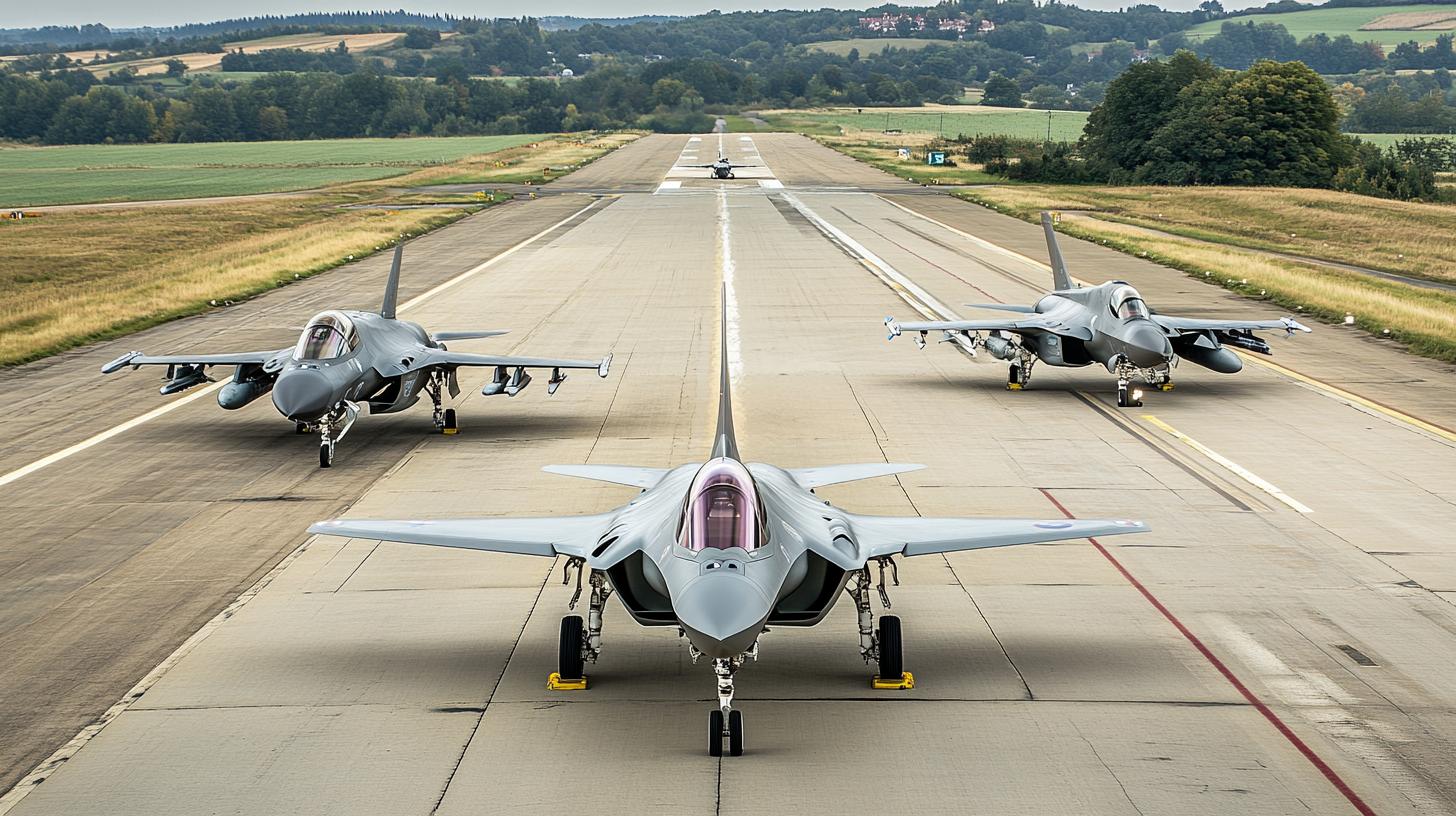When it comes to modern aerial combat, two formidable contenders vie for superiority: the Eurofighter Typhoon and the F-35 Lightning II. Both jets come with their own sets of advantages and challenges, making the decision between them a significant one for countries considering upgrades to their air force.
The Eurofighter Typhoon is known for its versatility and cost-effectiveness. As a 4.5-generation aircraft, it shines in multi-role capabilities. Despite its older technology, it’s praised for low operational restrictions due to being developed by a European consortium. Its initial cost is around 138 million euros, and it boasts a relatively lower flight hour cost of 20,000 euros. However, its stealth capabilities may not match those of newer aircraft, though updates are possible.
On the other hand, the F-35 Lightning II represents a leap towards the future with its fifth-generation technology. It excels in network-centric warfare and offers extensive multi-role functionality. Despite being a highly advanced fighter, it’s accompanied by a hefty price tag of 80-100 million dollars, with flight hour costs ranging between 33,000 to 42,000 dollars. Technical challenges and a reliance on U.S. support for maintenance highlight potential drawbacks.
Each aircraft offers unique strengths, but the choice ultimately depends on the specific needs and financial considerations of the purchasing country. Both the Eurofighter and the F-35 symbolize cutting-edge military capability, yet they cater to different strategic goals and budgets.
The Skies Beyond: Unseen Factors Shaping the Future of Fighter Jets
When comparing fighter jets like the Eurofighter Typhoon and the F-35 Lightning II, the conversation often revolves around cost, generation, and capabilities. However, a multitude of lesser-known factors is equally crucial to future technological progress and humanity’s trajectory in aerial warfare. Let’s explore these intriguing aspects, including unexpected facts and controversies associated with these aircraft, that don’t merely impact military decisions but ripple into broader technological evolution and international relations.
Behind the Scenes: Implications for Human Advancement
The development and deployment of advanced fighter jets are not just a matter of military upgrade; they affect global technological progress and human advancement. One such area is the integration of AI and machine learning in these aircraft. Modern jets, especially the F-35, leverage complex algorithms for data fusion and threat assessment, pushing the envelope in developing AI technologies. These advancements trickle down into civilian applications, influencing sectors like autonomous vehicles and smart infrastructure.
Environmental Controversies and Ethical Questions
As combat aircraft become more advanced, concerns about their environmental impact grow. The carbon footprint of producing and maintaining such aircraft, despite their strategic value, raises ethical questions. Both jets have a significant carbon output, with debates centering around long-term sustainability and environmental responsibility. How can nations justify this environmental cost, and what innovations might mitigate it? This debate often shifts the focus to cleaner, more efficient aerospace technologies, fostering innovations that benefit humanity broadly.
Pros and Cons: Weighing Risks and Rewards
While the F-35’s advanced network-centric capabilities represent a significant leap in warfare technology, they introduce substantial risks. Cybersecurity has become a vital area of concern. With the F-35’s heavy reliance on data networks, questions arise about its vulnerability to cyber threats. A breach could not only compromise military operations but expose sensitive information to adversaries. On the flip side, advancing cybersecurity measures initially developed for these jets could enhance data protection across various industries.
The Eurofighter Typhoon, despite being a 4.5-generation aircraft, remains a robust choice for countries focused on cost-effective solutions. Its maintainability without full dependence on foreign nations appeals to those seeking more control over their armaments without the geopolitical strings attached.
Technological Advancements Propelled by Military Needs
The push for superior aircraft technology often leads to breakthroughs in adjacent fields. For instance, advancements in materials science driven by the need for lightweight yet durable components for these aircraft spur innovations in other industries. This cross-pollination of technology can lead to stronger, lighter materials for everything from sporting equipment to structural components in architecture and civil engineering.
Wider Implications and Future Questions
Given these considerations, several questions emerge: Can the reward of advanced aerial capabilities justify the involved risks? How might these technologies transform beyond their initial military use, benefitting civilian domains? What role will international collaborations or competition play in ensuring the responsible advancement of such technologies?
For those interested in exploring these topics further, the implications of fighter jet developments extend into various domains. For more insights, visit Lockheed Martin or Eurofighter where additional data and resources provide deeper dives into the mechanisms and future of aerial combat technology.
As technology advances, the dialogue around these fighter jets continues to evolve, highlighting the intricate interplay between military necessity and technological innovation that drives the future of both military and civilian developments.







